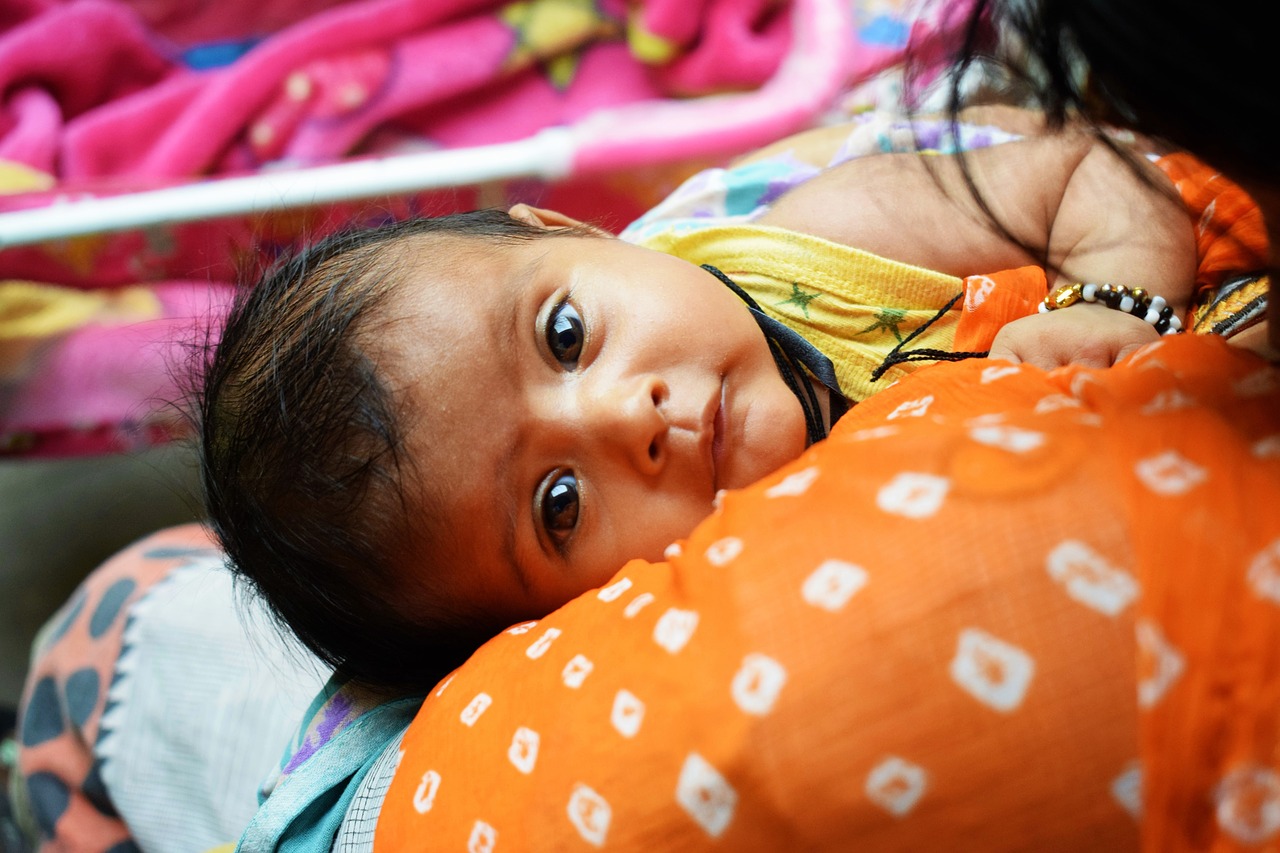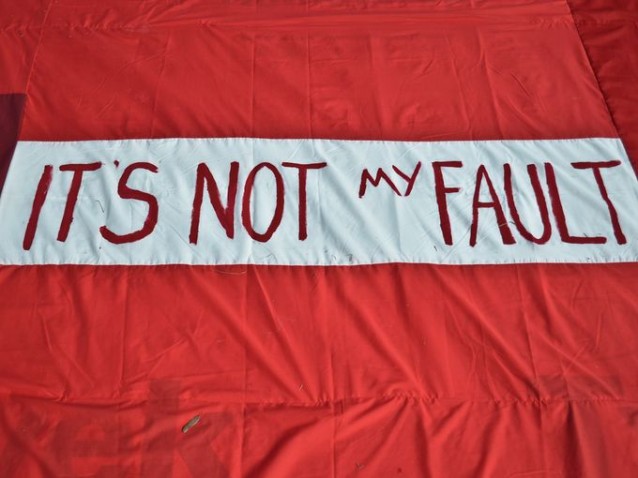By: Niva Sandhu
Growing up, I always heard the story about the birth of my parnani (maternal great-grandmother, Roop Kaur) in the year 1908 in the farming village near Muktsar, Punjab. My parnani, who, after being the eighth daughter born to her parents, was about to be killed by her father. At the last moment he changed his mind, not about murdering his daughter, but about who would actually do it. Let’s call my great-great grandfather Swarn Singh. Swarn Singh decided he wanted his wife to drown their newborn baby girl . However, she refused. “I will not commit such a sin nor do I agree with such a heinous act,” she bravely replied. Out of anger Swarn Singh took the baby girl, who was just a few hours old. He walked to the back of his home towards a running river. As he held up his daughter ready to submerge her underwater, the baby looked into her father’s eyes and cracked a smile. That smile melted his cold heart. He brought her back to his wife and told her he could not kill their daughter. Swarn Singh and his wife went on to raise their 8 daughters, all of whom he came to love deeply. All it took was my parnani’s smile. All it took was her smile to stop Swarn Singh from engaging in the common South Asian practice of female infanticide.
Now the questions arise. Why does female infanticide and sex selective abortions occur in present day South Asia? What are the root causes of these heinous acts? Why are proverbs like, “Raising a daughter is like watering your neighbor’s plant,” still widely used to explain socially constructed financial drain of females on their families? One way to explore these questions is by viewing the situation through Feminist Political Economic Theory (FPE). FPE draws our attention to the ways in which different economic arrangements are related to different gender relations. It analyses the politics of everyday life, focusing on the relationships between gender, race, and class as they are shaped by households, markets, states, and women’s activism.
Pre-Colonial South Asia
In ancient South Asia, gender roles and the place of women differed by region, tribe, and family. Some studies suggest that women enjoyed more rights, privileges, and opportunities, while others point to a trend of patriarchy.
Regardless, during this time, women played a relatively active and equal economic role in society especially when it came to manufacturing of products and farming, to the point where men had come to depend on women’s work. This pattern is consistent with sociologist, Fredrick Engels’ proposal that in “primitive societies” the economic arrangements encouraged men and women to share equally in the production and reproduction means of survival.
Brahminical Oppression of Women
The first large shift in South Asian gender roles came in 1500 BCE with the Aryan invasion of the Indian Subcontinent. This ushered in Brahminism and the caste system which, oppressed women. Brahminism encouraged sati (widow burning), institutionalized sutak (the belief that a woman giving birth to a child is unclean for a given number of days), made distinctions between the sexes in matters of religious participation, and ultimately made the oppression of women a legal norm.
The Mughal Empire
Fast-forward to Mughal rule (1526–1707) which brought with it a rise in gender imbalances. Discriminatory practices started to emerged during this time such as purdah (all-enveloping clothing and seclusion), child marriage, restriction of women’s movement, celebration of a boy’s birth and mourning of a girl’s birth, polygamy, and the prevention of widows to remarry. Furthermore, the environment in many areas had become dangerous for women. For instance, women were no longer safe to move about their city or village for work without a man in their presence to guard them. In The Quest For The Past, Iqbal Singh writes about the atrocities committed by Afghans in Punjab during this time; Hindu women would be kidnapped, raped, and sold into human trafficking.
British Colonialism
Next came British Colonialism. In order to secure their political and economic power in South Asia, the British Empire exacerbated and leveraged gender discrimination during its occupation. During British rule, the caste system became legally rigid and the subservience of women was expected. “The British Raj did not spell reprieve of gender oppression for woman, but rather a stricter sense of it,” writes Alex Buckley. Through British rule, male Indians in society were able to continue open gender oppression and inequality. Thus, Indian females were partitioned into an even lower role in society than was previously held before colonial rule.”
Sex Selective Abortions
The ideologies formed in South Asia’s history are deeply part of today’s fabric. One of the ways misogyny shows up today is how families still view females as burdens and thus, practice sex-selective abortions.
These negative ideologies have led to couples having female selective abortions in favor of a male child. In the 1970s, the introduction of ultra-sound technology was touted as a way for families to create their “ideal family” and allowed for early sex-determination and subsequent termination. Today, sex determination tests allow couples to readily abort their unborn female child. Advertisements such as, “Spend five hundred rupees now to save 500,000 rupees later [in dowry]”, lure couples into sex-selective abortions.
The statistics illustrating this are staggering. Gynecologists from the Government Multi Specialty Hospital stated a total of 5,414 sex selective abortions were conducted from 2017-2018 in Chandigarh alone. According to Punjab’s census, for every 1,000 men there are 900 women. A report by UNICEF states that 7,000 fewer female babies are born everyday in South Asia because of sex-selective abortions.
Sex-selective abortions are happening outside of Punjab too, occurring in Punjabi households in Canada and the UK, for instance. In April 2016, a study in the Canadian Medical Association Journal found that couples with at least one Indian-born parent had higher than expected male-female ratios. “This boy-bias was even more pronounced among the third born of three-child families where the two eldest are girls,” Steve Connor reports.
In the UK, Rani Bilkhu, from the campaign group Jeena International, said British Asian women, as well as those born in South Asia and married to men in the UK, were aborting girls because of the cultural pressure to have sons – often from their in-laws. “We have a high rate of women coming to us and saying, ‘We are being threatened and coerced to having abortions, we’re being thrown down the stairs.’”
Moving Forward
It is not until entrenched cultural beliefs, practices, and systems change will gender inequality be eradicated. Activist Malika Kaur points out that “…sex-selective abortions are a symptom of a larger problem: that girls are devalued because of societal norms and pressures. Many women and men earnestly fail to see the possibility of raising a daughter who can proudly carry the family name, support her parents in old age without ridicule, and live without fear of violence against her body, and the associated pain and shame for her family….The real solution lies in restructuring gender roles generally…Women, and their men, must be supported in bringing about societal change, in distinguishing true cultural heritage from patriarchy shrouded by the cultural argument.”
Here are a few ideas on how we can start celebrating, not killing, girls and women:
Look to Gurbani
We all know that Guru Sahib proclaimed that women stand with men and they are not inferior to men. But have you looked at the Gurbani?
Think of the famous shabad revealed to Guru Nanak Sahib Ang 473,
ਭੰਡਿ ਜੰਮੀਐ ਭੰਡਿ ਨਿੰਮੀਐ ਭੰਡਿ ਮੰਗਣੁ ਵੀਆਹੁ ॥
bha(n)dd ja(n)meeaai bha(n)dd ni(n)meeaai bha(n)dd ma(n)gan veeaahu ||
From woman, man is born; within woman, man is conceived; to woman he is engaged and married.
Here, Guru Nanak Sahib Ji explains that a woman holds an important place on earth. She gives birth to humanity; a man cannot go through life without a woman. So why give her an inferior place in society?
Or consider the following, incredibly powerful, shabad revealed to Guru Amar Das Sahib about the evils of female infanticide. To understand it, you must first understand Hindu thinking and philosophy of the time. At the time, killing a cow or a Brahmin was considered criminal. Oral tradition explained that killing 100 cows was considered the same as killing 1 pure-white kapil cow; killing 100 pure white kapil cows was the same as killing 1 man; and killing 100 men was the same as killing 1 Brahmin man.
Playing on this well known idea of the scared-ness and value of cows and Brahmins, Guru Sahib includes in Bani that it is just as evil to kill a baby girl. Female infanticide was not considered criminal in many Hindu circles, but Guru Sahib declares that it is (Ang 1413):
ਬ੍ਰਹਮਣ ਕੈਲੀ ਘਾਤੁ ਕੰਞਕਾ ਅਣਚਾਰੀ ਕਾ ਧਾਨੁ ॥
Barahmaṇ kailī gẖāṯ kañkā aṇcẖārī kā ḏẖān.
If you kill a Brahmin, or a cow, or a baby girl, or accept the offering of a sinner…
ਫਿਟਕ ਫਿਟਕਾ ਕੋੜੁ ਬਦੀਆ ਸਦਾ ਸਦਾ ਅਭਿਮਾਨੁ ॥
Fitak fitkā koṛ baḏī▫ā saḏā saḏā abẖimān.
…you fall from grace in the eyes of the world; the world looks at you as if you’re a leper because of the bad deeds you’ve done. While you might think you have done something great and are filled with ego, the world thinks otherwise.
ਪਾਹਿ ਏਤੇ ਜਾਹਿ ਵੀਸਰਿ ਨਾਨਕਾ ਇਕੁ ਨਾਮੁ ॥
Pāhi eṯe jāhi vīsar nānkā ik nām.
Those who have forgotten Wahguru’s Naam, indulge themselves in such sinful actions.
ਸਭ ਬੁਧੀ ਜਾਲੀਅਹਿ ਇਕੁ ਰਹੈ ਤਤੁ ਗਿਆਨੁ ॥੪॥
Sabẖ buḏẖī jālī▫ah ik rahai ṯaṯ gi▫ān. ||4||
Leave all of your own ideas alone/burn them/throw them into the fire. Once you obtain the Essence of Knowledge, all of this becomes clear.
Guru Sahib explains how killing 1 baby girl is the same evil as killing 1 Brahmin, a powerful declaration in a time where women were considered lower than low-caste men.
Embrace Sikhi
Sikhi’s foundation is based on the philosophy of gender equality and Sikh women have always been the backbone of Khalsa Panth. For example:
– Mai Bhago led her fellow Sikh soldiers to battle, sword in hand. She later became Guru Gobind Singh Ji’s bodyguard.
-Rani Sada Kaur commanded battles and laid the foundation for the Sikh empire to be ruled by her son-in-law Maharaja Ranjit Singh.
-In the Battle of Panipat, Sikh warriors strategically rescued thousands of Maratha women who were being transported to Afghanistan as sex slaves.
–The Rehat Maryada (also known as the Sikh Code of Conduct ) forbids female infanticide as it interferes with Waheguru’s creations.
– Sikh Scholar Sant Gudar Singh worked against female infanticide. In 1758, he heard that Raja Gajpat Singh (of Jind State), was killing baby girls in his family by burying them. Gudar Singh went to his house and demanded the new born baby girl be taken out. He reprimanded the family and took the girl away to raise himself. Raj Kaur grew up to be very spiritual. She was married to Sardar Mahan Singh (1774), who later became the leader of Misl Shukarchakiyan. Raj Kaur later gave birth to Maharaja Ranjit Singh in 1780. She became Ranjit’s regent during his minority and managed the affairs of the Sukerchakia Misl.
These are perfect examples of how Sikhi has laid the foundation of gender equality. By embracing Sikh history and values, we can push back against the patriarchy and misogyny that lead to sex selective abortions.
Reject Dowry
The practice of dowry, or the custom of the bride’s family giving expensive gifts to the groom’s family prior to marriage, perpetuates idea of girls being less desired than boys. Professor S. Srinivasan writes about how complex and elaborate dowry has become in his article, Daughters or Dowries. Gifts demanded can be cars, property, lavish furniture, cash, and gold. Many families spend their life savings on marrying their daughter. Often times, if demands go unfulfilled, the groom’s family resorts to violence; the Crime Records Bureau of Punjab states in the last 5 years there have been 499 registered dowry deaths in the state. This does not included dowry harassment cases or deaths that go unreported.
Our Gurus were against the custom of dowry as seen in the following Shabad revealed to Guru Amar Das Sahib Ji, Ang 78.
ਹੋਰਿ ਮਨਮੁਖ ਦਾਜੁ ਜਿ ਰਖਿ ਦਿਖਾਲਹਿ ਸੁ ਕੂੜੁ ਅਹੰਕਾਰੁ ਕਚੁ ਪਾਜੋ ॥
Hor manmukẖ ḏāj jė rakẖ ḏikẖālėh so kūṛ ahaʼnkār kacẖ pājo.
Any other dowry, which the self-willed manmukhs offer for show, is only false egotism and a worthless display.
ਹਰਿ ਪ੍ਰਭ ਮੇਰੇ ਬਾਬੁਲਾ ਹਰਿ ਦੇਵਹੁ ਦਾਨੁ ਮੈ ਦਾਜੋ ॥੪॥
Har parabẖ mere babulā har ḏevhu ḏān mai ḏājo. ||4||
O my father, please give me the Name of Waheguru as my wedding gift and dowry. ||4||
Our Gurus proclaimed dowry giving is a shameless display of the ego – following our desires of material goods. Instead, our Gurus say, gift your daughter the Guru’s name as that will be her greatest wealth.
The Sikh Rehat Maryada also discourage dowry stating, “No Sikh should accept a match for their son or daughter for monetary consideration”.
Change Policy
To improve Punjab’s sex ratio, in 2012 Punjab cabinet officials implemented the Bebe Nanki Laadli Beti Scheme for families who make Rs 30,000 or below annually. The girl child will receive RS 61,000 by the time she is 21 years old, as well as RS 20,000 deposited into a life insurance plan. Although this may not be the best plan, it’s a start to decrease sex selective abortions among a certain demographic.
Support & Join Organizations
Many charitable organizations have launched campaigns around the world to empower and celebrate the girl child. If you’re interested in helping change the narrative about girls and women in South Asian culture, check these out:
Lorhi For Girls
The holiday of Lorhi, which many use as a time to celebrate the birth of their son, is now being celebrated at the birth of daughter as well. Lorhi For Her is an initiative spearheaded by a group of young Punjabi women from Toronto, Canada. They host events in different provinces each year to spread awareness and celebrate the birth of baby girls. At these events, they use dance and song to empower women from the community.
Pink Ladoo
Another initiative that celebrates the birth of girls is the Pink Ladoo Project. The Pink Ladoo Project partners with Punjabi restaurants to produce pink ladoos for those wanting to distribute them on the birth of their baby girl. Distributing pink ladoos to friends and family helps start difficult conversations about gender inequality. According to their mission, those participating in sharing pink ladoos are creating new traditions and customs that value females.
Laadliya
In Canada, the organization Laadliyan celebrates South Asian daughters. They strive to inspire South Asian females to become empowered individuals through engagement, education, and awareness. Laadliyan facilitate inter-generational conversations, female fellowship programs, and care packages creation.
Initiatives likes Lorhi For Her, Pink Ladoo Project, and Laadliya challenge female inequality and the customs that go along with perpetuating gender inequality. The idea of gender equality is not a new concept; our Guru enlightened us about the value of women centuries ago. We just need to practice these teachings and the world would be a much more peaceful place.
My Parnani
Many of you may be wondering what became of my parnani. At a young age she was married to a very wealthy landowner, who was a widower with three teenage daughters. Coming from a family with 7 other sisters and no brother, she felt like had won the lottery. It was a proposal that could not be turned down. My parnani was only a few years older than her step-daughters but she took on her role as a mother with great responsibility. She raised my nani, Tej Kaur, and her sisters like her very own. She was a mother, friend, and sister to them. It is also a bit ironic that my parnani went on to give birth to six sons! My parnani made sure to visit my mother and her sisters often after they were married. She never wanted them to think they were forgotten. My great-grandmother made sure to teach her sons to respect and value women rather than succumb to society’s version of a woman’s worth.

Niva Sandhu is a wife and a mother of one cupcake eating princess, living just outside of the windy city of Chicago. She is a passionate elementary teacher by day and a writer by night. You can find her gracing the pages of the Community Awareness Column of Bollywood Film Fame Magazine Canada writing about controversial and pressing global issues that affect humanity. Niva has a Masters in Sociology with her thesis focusing on female infanticide and sex selective abortions among South Asians. She is on a mission to make this world a better place through dissemination of information and a pinch of sparkle!
Feature photo by Ankit Singh





2 Comments
Anonymous
03/24/2024 at 5:48 pmSikhs are the number one perpetrators of female infanticide. Kaur life? More like Kaur-Abort.
Daljit
03/24/2024 at 5:54 pmYou harp on and on arrogantly about the evils of Hindus and Musims, yet Sikhs are the number one perpetrators of female infanticide. Look at the numbers. Sikhs have one of the worst sex ratios on earth.
Despite your references to a handful of important women in the Sikh religion, you could multiply them by 100 and they would be outnumbered a million to one in the religions which you attempt to degrade, deflect to or blame.
Kaur life? More like Kaur-Abort in the culture you egotistically defend.